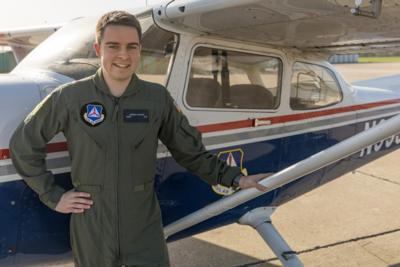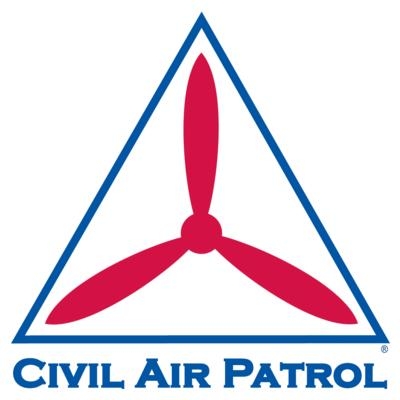Mon, Aug 02, 2021
When Things Go Bad, CAP Helps Set Them Right
By Gene Yarbrough
Civil Air Patrol (CAP) held a press briefing at OSH 21 highlighting their storied history and lifesaving technology and capabilities.

CAP is the 7th largest air force in the world with approximately 560 aircraft and is the largest drone operator in North America with over 2100 units deployed in every state of the union. Deploying both manned and unmanned aircraft systems is a key aspect of their duties to provide search and rescue services, along with myriad other important functions. The Civil Air Patrol is a civilian auxiliary of the United States Air Force and was originally tasked with patrolling the coastal waters of the United States for submarines and other foreign warships. Over the years, CAP’s duties have expanded to include search and rescue for downed/overdue aircraft along with disaster recovery, and humanitarian aid.
The spokesperson for CAP highlighted their duties have expanded to non-aviation search and rescue duties, recalling stories of hikers in adverse weather were rescued using new cellular based technologies. The new capabilities allow CAP personnel to locate persons based on their personal cell phones. The technology uses existing cell towers with unique software to triangulate approximate positions, combined with ADSB surveillance abilities allows CAP searchers to pinpoint distressed persons within a few feet of their actual positions. The technology is so advanced that many times the searchers are able to locate their targets within minutes of a distress call. This technology has already proven lifesaving in many instances.
From the CAP News release:
“…. In the 2019 search for Kurt Bohlsen in Massachusetts’ Berkshire Mountains, civil air patrol’s national radar analysis team extrapolated the data from his aircraft’s last known position. CAP’s cell phone forensics team also pinged Bohlsen’s mobile phone, to decipher precise coordinates that confirmed the radar analysis team’s data. In less than 30 minutes the survivors were rescued. Without CAP’s lifesaving technology and dedicated volunteers, these three PA32 crash survivors — one with a broken back — would likely have perished by morning due to exposure in subfreezing conditions.
Another excerpt:

“For example, CAP cell forensics was instrumental in saving the life of a 39-year-old hiker who fell into the subfreezing HOH River in northwestern Washington in January 2020. While his cellular provider was contacted by local authorities to help identify his location, the potential search area identified by the carrier was too expansive to be useful in the mountains at night. Twenty minutes after Civil Air Patrol was brought into the search effort, the individual, suffering from severe hypothermia, clicked on a message sent to his phone from cap, providing his location with 12-meter accuracy (which was more than 4 miles away from the search location provided by the hiker’s cellular provider). Using CAP’s data, a rescue helicopter was sent to the hiker’s location despite having never visually located the missing hiker— the hiker survived.”
This cell-based technology, along with the other advanced sensor capabilities, is an important and potent tool in the civil air patrol portfolio, used for the best of intentions in the worst of times.
More News
“We respectfully call on the City of Mesa to: 1. Withdraw the landing fee proposal immediately 2. Engage with the aviation community before making decisions that impact safet>[...]
High Speed Taxiway A long radius taxiway designed and provided with lighting or marking to define the path of aircraft, traveling at high speed (up to 60 knots), from the runway ce>[...]
Aero Linx: International Federation of Airworthiness (IFA) IFA uniquely combines together all those with responsibility for policies, principles and practices concerned with the co>[...]
Controller’s Expectation That VW02 Would Have Departed Sooner Led To An Inadequate Scan And Loss Of Situational Awareness Analysis: A Robinson R-44 helicopter N744AF, VW02 (V>[...]
A Few Questions AND Answers To Help You Get MORE Out of ANN! 1) I forgot my password. How do I find it? 1) Easy... click here and give us your e-mail address--we'll send it to you >[...]
 Aero-News: Quote of the Day (12.09.25)
Aero-News: Quote of the Day (12.09.25) ANN's Daily Aero-Term (12.09.25): High Speed Taxiway
ANN's Daily Aero-Term (12.09.25): High Speed Taxiway ANN's Daily Aero-Linx (12.09.25)
ANN's Daily Aero-Linx (12.09.25) NTSB Final Report: Diamond Aircraft Ind Inc DA20C1 (A1); Robinson Helicopter R44
NTSB Final Report: Diamond Aircraft Ind Inc DA20C1 (A1); Robinson Helicopter R44 ANN FAQ: Q&A 101
ANN FAQ: Q&A 101




